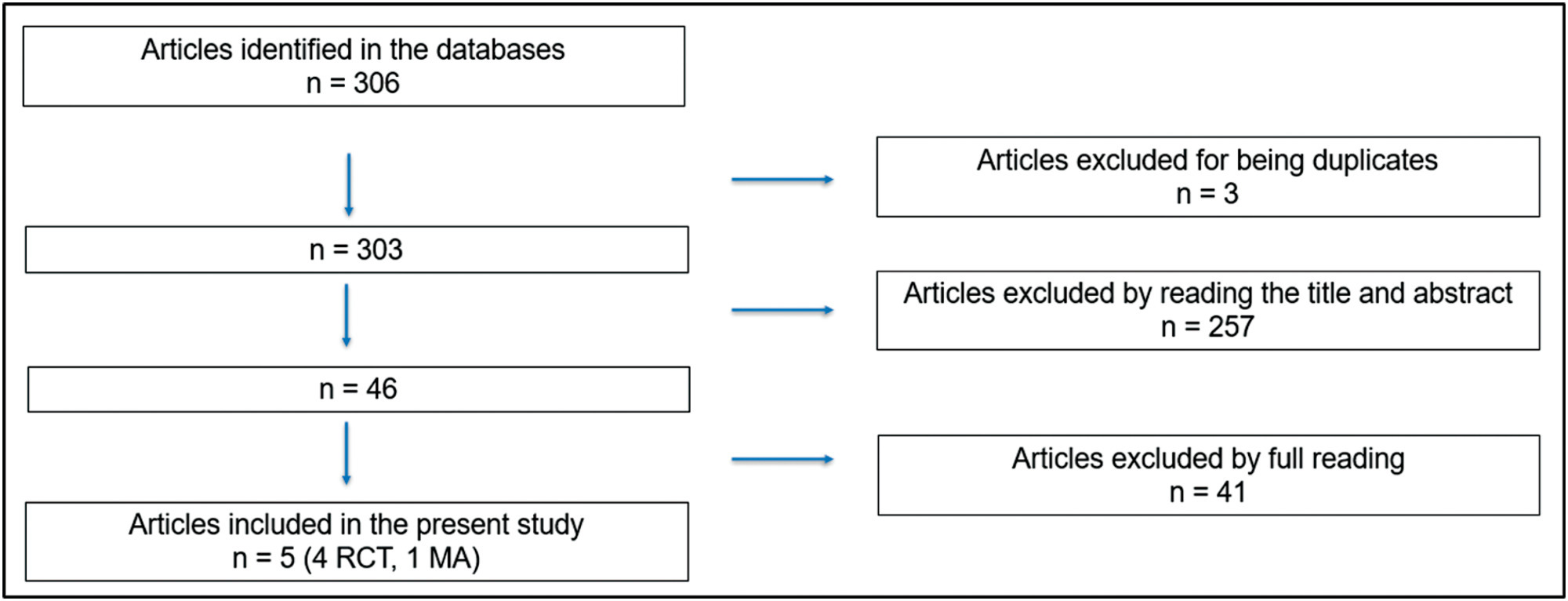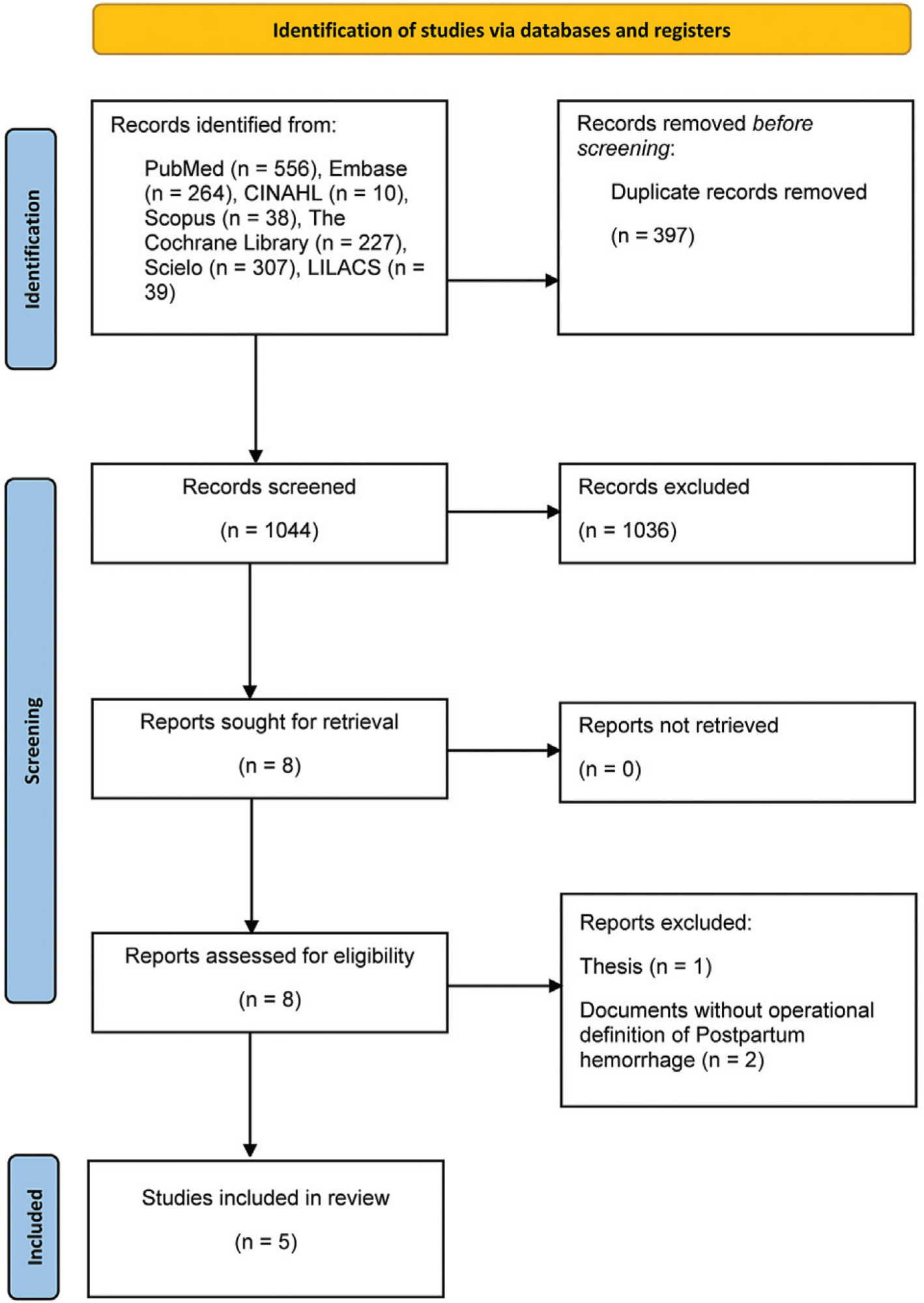-
Review Article01-11-2023
Combined Oral Contraceptive Use and the Risk of Cervical Cancer: Literature Review
Revista Brasileira de Ginecologia e Obstetrícia. 2023;45(12):818-823
Abstract
Review ArticleCombined Oral Contraceptive Use and the Risk of Cervical Cancer: Literature Review
Revista Brasileira de Ginecologia e Obstetrícia. 2023;45(12):818-823
Views366See moreAbstract
Cervical cancer (CC) is caused by persistent infection of human papillomavirus of high oncogenic risk (hr-HPV); however, several cofactors are important in its carcinogenesis, such as smoking, multiparity, and prolonged use of oral hormonal contraceptives (COCs). Worldwide, 16% of women use COCs, whereas in Brazil this rate is of ~ 30%. The safety and adverse effects of COCs are widely discussed in the literature, including the increase in carcinogenic risk. Due to the existence of several drugs, combinations, and dosages of COCs, it is hard to have uniform information in epidemiological studies. Our objective was to perform a narrative review on the role of COCs use in the carcinogenesis of cervical cancer. Several populational studies have suggested an increase in the incidence of cervical cancer for those who have used COCs for > 5 years, but other available studies reach controversial and contradictory results regarding the action of COCs in the development of CC.
-
Review Article12-11-2023
Prognostic Impact of AGR3 Protein Expression in Breast Cancer: A Systematic Review and Meta-analysis
Revista Brasileira de Ginecologia e Obstetrícia. 2023;45(10):609-619
Abstract
Review ArticlePrognostic Impact of AGR3 Protein Expression in Breast Cancer: A Systematic Review and Meta-analysis
Revista Brasileira de Ginecologia e Obstetrícia. 2023;45(10):609-619
Views193See moreAbstract
Objective
To investigate the clinicopathological significance and prognosis of the expression of the anterior gradient 3 (AGR3) protein in women with breast cancer.
Data Sources
The PubMed, CINAHL, EMBASE, Scopus, and Web of Science databases were searched for studies published in English and without restrictions regarding the year of publication. The search terms were: breast cancer AND anterior gradient 3 OR AGR3 expression.
Study Selection
We included observational or interventional studies, studies on AGR3 protein expression by immunohistochemistry, and studies on invasive breast cancer. Case reports, studies with animals, and reviews were excluded. In total, 4 studies were included, containing 713 cases of breast cancer.
Data Collection
Data were extracted on clinicopathological characteristics and survival. A meta-analysis of the prevalence of AGR3 expression was performed according to the clinicopathological characteristics, hazard ratios (HRs), and overall survival and disease-free survival.
Data Synthesis
The expression of AGR3 was found in 62% of the cases, and it was associated with histological grade II, positivity of estrogen and progesterone receptors, low expression of ki67, recurrence or distant metastasis, and lumen subtypes. In patients with low and intermediate histological grades, AGR3 expression was associated with worse overall survival (HR: 2.39; 95% confidence interval [95%CI]: 0.628–4.159; p = 0.008) and worse disease-free survival (HR: 3.856; 95%CI: 1.026–6.686; p = 0.008).
Conclusion
The AGR3 protein may be a biomarker for the early detection of breast cancer and predict prognosis in luminal subtypes. In addition, in patients with low and intermediate histological grades, AGR3 protein expression may indicate an unfavorable prognosis in relation to survival.

-
Review Article12-05-2023
Effect of Lubricant Use on Cervicovaginal Cytology – What’s the Evidence?
Revista Brasileira de Ginecologia e Obstetrícia. 2023;45(11):724-728
Abstract
Review ArticleEffect of Lubricant Use on Cervicovaginal Cytology – What’s the Evidence?
Revista Brasileira de Ginecologia e Obstetrícia. 2023;45(11):724-728
Views175See moreAbstract
Objective
To determine if the use of lubricating gel on the speculum during the cervicovaginal cytology examination interferes with the results obtained, as well as whether it reduces reported discomfort in patients.
Data sources
A systematic review was carried out according to the Preferred Reporting Items for Systematic Reviews and Meta-Analyses (PRISMA) recommendations, with a search in the Pubmed/Medline, Scielo, Cochrane Library, Embase databases of articles published between January 2011 and May 2022. The keywords used were cytology, speculum, lubricant, result, and pain.
Selection of studies
The initial search resulted in 306 articles, of which were excluded three because they were duplicates, 257 after reading the title and abstract and 41 after reading the full text. Thus, five articles were selected for the study: four randomized clinical trials and one metanalysis.
Data collection
The selection of articles was performed by two investigators. The 5 selected articles were read in full and submitted to a comparative analysis.
Data synthesis
Screening through cervicovaginal cytology allows for early diagnosis and reduction of associated mortality, but the procedure can be associated with pain. A small amount of aqueous lubricating gel in the speculum can be used to reduce the discomfort associated with performing cervicovaginal cytology.
Conclusion
The use of lubricating gel in the speculum does not seem to be associated with a change in the cytology result and reduces the discomfort associated with its insertion into the vagina.

-
Review Article12-05-2023
Sexual Function of Patients with Deep Endometriosis after Surgical Treatment: A Systematic Review
Revista Brasileira de Ginecologia e Obstetrícia. 2023;45(11):729-744
Abstract
Review ArticleSexual Function of Patients with Deep Endometriosis after Surgical Treatment: A Systematic Review
Revista Brasileira de Ginecologia e Obstetrícia. 2023;45(11):729-744
Views288See moreAbstract
Objective
To review the current state of knowledge on the impact of the surgical treatment on the sexual function and dyspareunia of deep endometriosis patients.
Data Source
A systematic review was conducted in accordance with the Meta-Analysis of Observational Studies in Epidemiology (MOOSE) guidelines. We conducted systematic searches in the PubMed, EMBASE, LILACS, and Web of Science databases from inception until December 2022. The eligibility criteria were studies including: preoperative and postoperative comparative analyses; patients with a diagnosis of deep endometriosis; and questionnaires to measure sexual quality of life.
Study Selection
Two reviewers screened and reviewed 1,100 full-text articles to analyze sexual function after the surgical treatment for deep endometriosis. The risk of bias was assessed using the Newcastle-Ottawa scale for observational studies and the Cochrane Collaboration's tool for randomized controlled trials. The present study was registered at the International Prospective Register of Systematic Reviews (PROSPERO; registration CRD42021289742).
Data Collection
General variables about the studies, the surgical technique, complementary treatments, and questionnaires were inserted in an Microsoft Excel 2010 (Microsoft Corp., Redmond, WA, United States) spreadsheet.
Synthesis of Data
We included 20 studies in which the videolaparoscopy technique was used for the excision of deep infiltrating endometriosis. A meta-analysis could not be performed due to the substantial heterogeneity among the studies. Classes III and IV of the revised American Fertility Society classification were predominant and multiple surgical techniques for the treatment of endometriosis were performed. Standardized and validated questionnaires were applied to evaluate sexual function.
Conclusion
Laparoscopic surgery is a complex procedure that involves multiple organs, and it has been proved to be effective in improving sexual function and dyspareunia in women with deep infiltrating endometriosis.

-
Review Article09-08-2023
Weaknesses in the Continuity of Care of Puerperal Women: An Integrative Literature Review
Revista Brasileira de Ginecologia e Obstetrícia. 2023;45(7):415-421
Abstract
Review ArticleWeaknesses in the Continuity of Care of Puerperal Women: An Integrative Literature Review
Revista Brasileira de Ginecologia e Obstetrícia. 2023;45(7):415-421
Views209See moreAbstract
The aim of the present study was to identify how the transition of care from the hospital to the community occurs from the perspective of puerperal women at risk. An integrative literature review was performed, with the question: “How does the transition of care for at-risk puerperal women from the hospital to the community occur?” The search period ranged from 2013 to 2020, in the following databases: PubMed, LILACS, SciELO, and Scopus. MESH, DeCS and Boolean operators “OR” and “AND” are used in the following crossover analysis:patient transfer ORtransition care ORcontinuity of patient care ORpatient discharge ANDpostpartum period, resulting in 6 articles. The findings denote discontinuity of care, given the frequency of non-adherence to the puerperal consultation. Transition studies of care in the puerperium were not found, which requires proposing new studies.
-
Review Article08-07-2023
Mental Health Disorders in Circumcised Reproductive-age Women, Legal Dimensions and Prevention Strategies: A Narrative Review
Revista Brasileira de Ginecologia e Obstetrícia. 2023;45(5):281-288
Abstract
Review ArticleMental Health Disorders in Circumcised Reproductive-age Women, Legal Dimensions and Prevention Strategies: A Narrative Review
Revista Brasileira de Ginecologia e Obstetrícia. 2023;45(5):281-288
Views222See moreAbstract
Objective:
Female genital mutilation/cutting (FGM/C) can affect women’s lives through various physical, psychological, social and even sexual mechanisms. According to the World Health Organization guidelines for managing the health effects of FGM/C, further research into its psychological effects and preventative measures is required. In this study, a comprehensive review of the mental health consequences of circumcised women of reproductive age has been conducted with a special focus on providing preventive solutions.
Methods:
A comprehensive search of the Web of Science, PubMed(MEDLINE), Proquest ,Scopus and Google scholar was carried outfrom 2000 to 2022. The second stage of search was conducted in grey literature. To facilitate a systematic approach to search the literature, the PECO framework, was adopted.
Results:
The result of this narrative review study showed that, the most common mental health disorder in reproductive age circumcised women were depression, anxiety and post-traumatic stress disorder. Some studies found a significant relationship between parents’ education level and circumcised girls, so that parents of the circumcised women had a low level of education. Two studies considered religious beliefs, tradition, cleanness, sexual desire control and virginity as the reasons for FGM/C.
Conclusion:
All forms of FGM/C may be harmful to one’s health. Women, who have undergone widespread forms of circumcision, are more likely to develop mental disorders. As the psychosocial effects of circumcision can affect the sexual experience of circumcised women, addressing this issue, emphasizing its legal aspects, and providing preventative solutions can improve physical, mental, social, and even sexual health in circumcised women.



